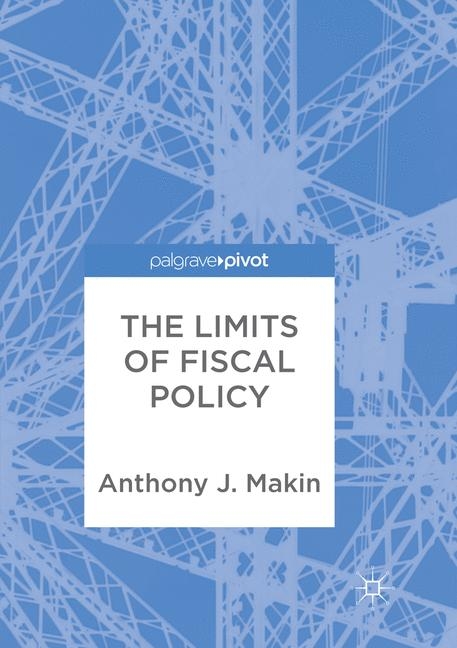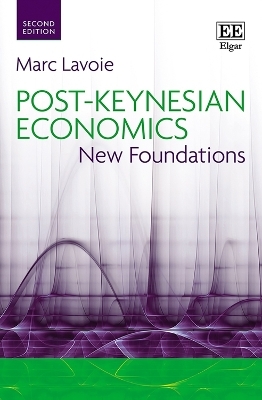
The Limits of Fiscal Policy
Springer International Publishing (Verlag)
978-3-030-07947-5 (ISBN)
- Titel ist leider vergriffen;
keine Neuauflage - Artikel merken
The book will appeal to university lecturers and researchers in macroeconomics and economists working in government and the private sector.
Anthony J Makin is Professor of Economics at Griffith University, Australia, and has previously served with the International Monetary Fund and Australian departments of Finance, Foreign Affairs and Trade and The Treasury. He has published widely and is a member of the National Economic Panel of the Economic Society of Australia.
Chapter 1 The Keynesian Revival 1.1 Introduction 1.2 The G20 Fiscal Response to the GFC 1.3 Non-Keynesian Perspectives 1.3.1 Economics or Politics? 1.3.2 The Paradox of Spending 1.4 Gauging Multipliers 1.5 What Lies Ahead Chapter 2 Macro-Foundations for Fiscal Analysis 2.1 Introduction 2.2 Macro-accounting Foundations 2.2.1 Sources of Funds 2.3 Saving, Investment and Budget Deficits 2.3.1 Budget Deficits and Government Borrowing 2.3.2 Private Investment and Saving 2.3.3 A Loanable Funds Framework 2.4 Aggregate Demand and the Keynesian Cross 2.4.1 Non-Keynesian Perspectives 2.5 Output, Absorption and the Trade Balance 2.5.1 Expenditure-Output Independence 2.6 Conclusion Chapter 3 Budget Deficits, Public Debt and Crowding Out 3.1 Introduction 3.2 Closed Economy Loanable Funds Framework 3.2.1 Modelling Global Financial Crises 3.2.2 Macroeconomic Policy Response 3.3 Open Economy Loanable Funds Framework 3.4 Higher Government Spending 3.4.1 Open Economy: PCM 3.4.2 Open Economy: ICM 3.5 Income Tax Cuts 3.6 Balanced Budget 3.7 Expected Depreciation 3.8 Conclusion
Chapter 4 Budget Deficits and National Income 4.1 Introduction 4.2 Investment, National Output and National Income 4.3 Higher Government Spending 4.3.1 Closed Economy 4.3.2 Open Economy: PCM 4.3.3 Open Economy: ICM 4.4 Income Tax Cuts 4.5 Balanced Budget 4.6 Credit Rating Downgrades and Expected Depreciation 4.7 Public Investment 4.7.1 Open Economy: PCM 4.7.2 Open Economy: ICM 4.8 Conclusion
Chapter 5 Fiscal Policy, Money and the Exchange Rate 5.1 Introduction 5.2 The Basic Model 5.2.1 The Real Sector 5.2.2 The Monetary Sector 5.2.3 Price Level Dynamics 5.2.4 Longer Run Adjustment 5.3. Monetary Policy versus Fiscal Policy 5.3.1 Monetary Stimulus 5.3.2 Fiscal Stimulus 5.3.3 Public Investment and Business Tax 5.4 Conclusion Appendix
Chapter 6 Fiscal Policy in a Dependent Economy 6.1 Introduction 6.2 The Two Sector Model 6.2.1 Expenditure and Output in the Tradable and Not-tradable Sectors 6.2.2 Monetary Relations 6.2.3 The External Accounts and Capital Mobility 6.3 Increased Government Spending 6.3.1 Higher Spending on Tradables 6.3.2 Higher Spending on Non-Tradables 6.4 Unsustainable Current Account Deficits and Fixed Exchange Rates 6.4.1 Unsustainable Current Account Deficits 6.4.2 Government Spending Under Fixed Exchange Rates: ICM 6.5 Conclusion Chapter 7 Fiscal Consolidation 7.1 Introduction 7.2 Public Debt Sustainability 7.3 Reduced Government Spending 7.3.1 Closed Economy 7.3.2 Open Economy: PCM 7.3.3 Open Economy: ICM 7.3.5 Dependent Economy 7.3.4 Aggregate Expenditure-Output Model 7.4 Income Tax Rises 7.5 Repairing the Fiscal Accounts 7.6 Conclusion Chapter 8 Recasting Fiscal Policy 8.1 Introduction 8.2 The Confidence Paradox 8.3 Recasting Fiscal Policy 8.4 Summing Up
Bibliography
| Erscheinungsdatum | 21.01.2019 |
|---|---|
| Zusatzinfo | XIII, 121 p. 34 illus. |
| Verlagsort | Cham |
| Sprache | englisch |
| Maße | 148 x 210 mm |
| Gewicht | 193 g |
| Themenwelt | Wirtschaft ► Volkswirtschaftslehre ► Finanzwissenschaft |
| Wirtschaft ► Volkswirtschaftslehre ► Makroökonomie | |
| Wirtschaft ► Volkswirtschaftslehre ► Wirtschaftspolitik | |
| Schlagworte | Economic Growth • fiscal activism • Global financial crisis • Keynes • monetary policy |
| ISBN-10 | 3-030-07947-3 / 3030079473 |
| ISBN-13 | 978-3-030-07947-5 / 9783030079475 |
| Zustand | Neuware |
| Haben Sie eine Frage zum Produkt? |
aus dem Bereich


